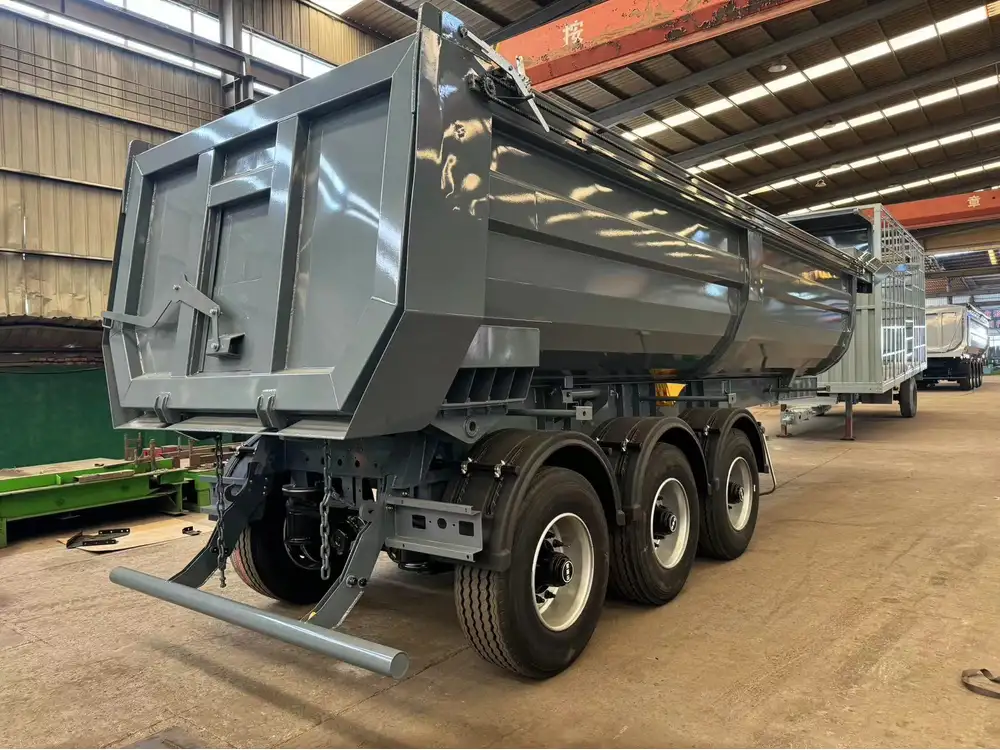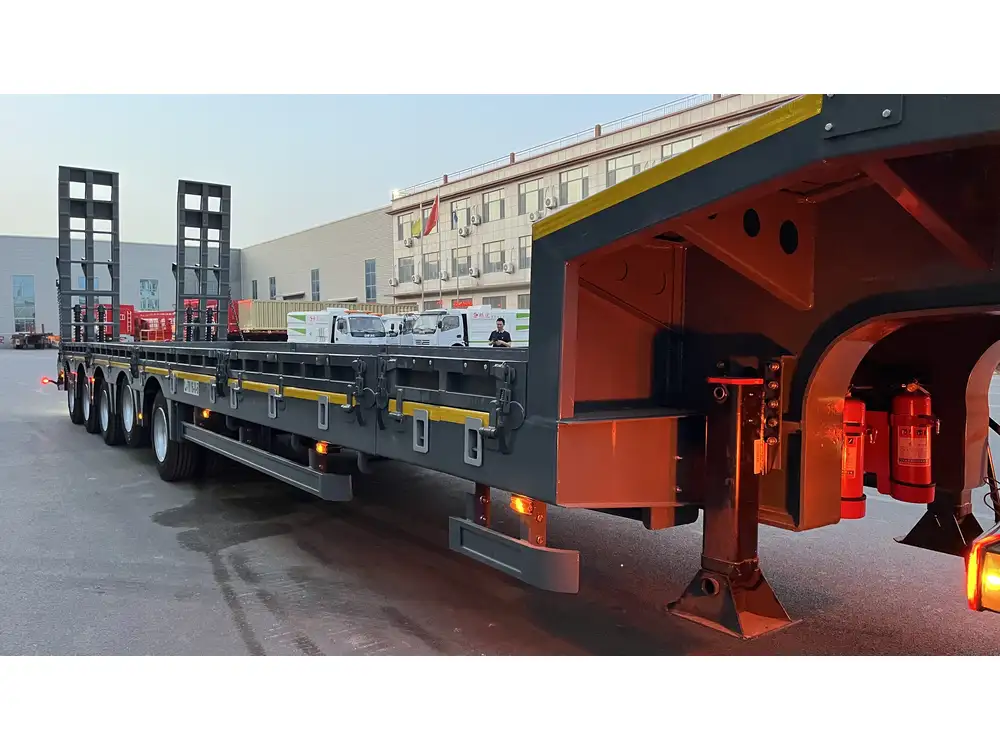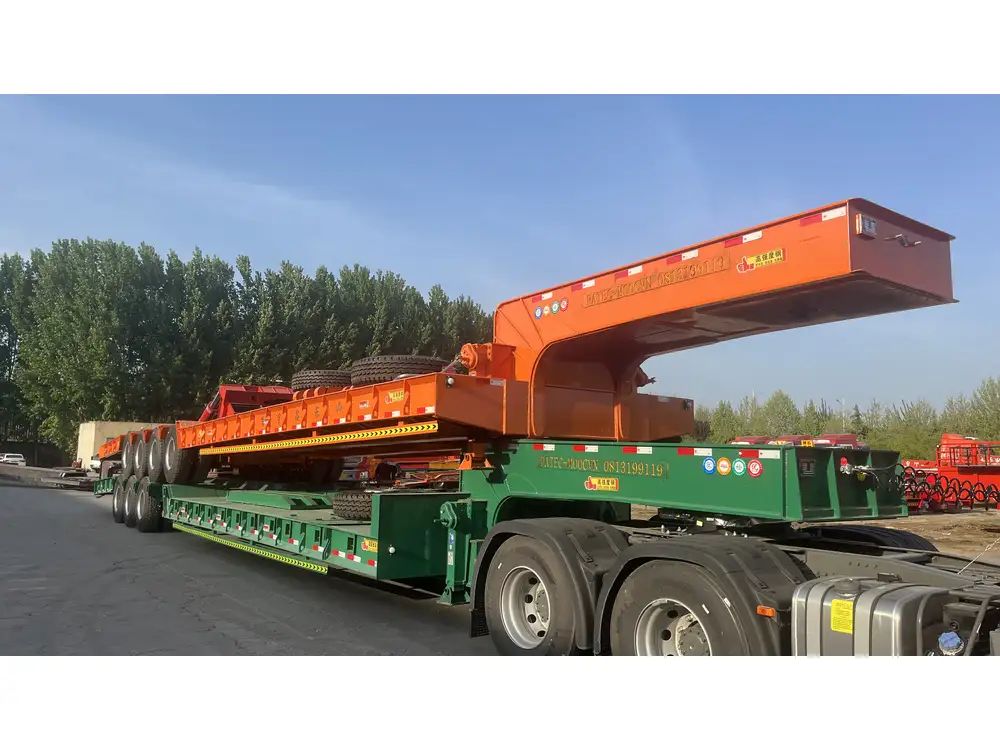When contemplating the logistics of transporting cargo, one critical aspect that often arises involves the weight of the equipment used, specifically flatbed semi-trailers. In the transportation industry, understanding how much a semi-trailer weighs, particularly a flatbed, is essential not only for regulatory compliance but also for optimizing load capacities and ensuring safe handling on the road. This article delves into the details surrounding the weight of flatbed semi-trailers, providing comprehensive insights, calculations, and considerations crucial for manufacturers, logistics companies, and operators alike.
Overview of Flatbed Semi-Trailer Weights
What is a Flatbed Semi-Trailer?
Before examining the weight specifics, it is pertinent to define what a flatbed semi-trailer is. This type of trailer has a flat, level platform with no sides or roof, allowing for flexibility in loading and unloading diverse cargo. Flatbed trailers are ideal for hauling oversized loads, construction equipment, and other large items that may not fit within the confines of a traditional enclosed trailer.

Typical Weight Ranges
The weight of a flatbed semi-trailer can vary significantly based on several factors, including design, material composition, and size. Generally, the weight of flatbed semi-trailers falls within the following ranges:
| Type of Flatbed Trailer | Average Weight (lbs) | Average Weight (kg) |
|---|---|---|
| Standard Flatbed | 4,000 – 5,500 | 1,814 – 2,495 |
| Heavy-Duty Flatbed | 6,000 – 9,000 | 2,722 – 4,082 |
Key Factors Influencing Weight
Construction Material:
- Steel vs. Aluminum: Aluminum flatbed trailers tend to be lighter, generally weighing between 300 to 1,000 pounds less than their steel counterparts. This weight difference can significantly impact the total allowable cargo weight.
- Hybrid Materials: Some manufacturers now utilize a combination of materials to optimize strength and weight.
Trailer Length:
- Flatbeds come in various lengths, commonly ranging from 48 to 53 feet. Longer trailers typically weigh more due to additional materials used in construction.
Design Features:
- Features such as additional axles, ramps, and specialized configurations can affect the overall weight. For instance, a flatbed designed with multiple axles allows for greater weight distribution but adds to the overall trailer weight.
Accessories and Optional Equipment:
- Winches, toolboxes, and side rails, while enhancing functionality, can also add extra weight to the trailer.
Tarping Systems:
- The inclusion of tarping systems for weather protection can increase the weight but may be necessary for specific cargo types.
Regulatory Considerations Related to Semi-Trailer Weights

Federal Regulations
Understanding federal regulations impacting semi-trailer weights is essential for compliance and safety. The Federal Motor Carrier Safety Administration (FMCSA) imposes guidelines regarding the maximum allowable weights for trailers. The general guideline specifies that the maximum gross weight for a combination vehicle (tractor and trailer) is 80,000 pounds, which includes:
- Trailer Weight: The weight of the empty trailer (tare weight).
- Cargo Weight: The total weight of the cargo being transported.
State Regulations
Variances exist among states concerning weight limits. Certain jurisdictions may have specific rules regarding the maximum weight per axle, total vehicle weight, and permits required for heavier loads. Operators should familiarize themselves with the laws applicable to each route they plan to traverse.
Scale Compliance
Legal compliance involves ensuring that the combined weight of the tractor, trailer, and cargo does not exceed regulatory limits after loading. Weigh stations are present on many highways to facilitate this compliance, and regular check-ups on weight can help avoid fines or operational delays.

Calculating the Weight of a Loaded Flatbed Semi-Trailer
Steps to Determine Trailer Weight
When calculating the maximum load that can be carried on a flatbed semi-trailer, it is crucial to understand the relationship between the trailer weight, cargo weight, and legal limits. The process can be broken down as follows:
Know Your Tare Weight:
- Identify the empty weight of the flatbed trailer (tare weight). This information is usually provided by the manufacturer.
Understand Weight Limits:
- Refer to federal and state regulations to ascertain the maximum allowable weight limits.
Calculate Maximum Cargo Weight: Using the following formula helps determine how much cargo can be safely loaded:
[ \text{Max Cargo Weight} = \text{Max Gross Weight} – \text{Tare Weight} ]
Example Calculation
Let’s consider a standard flatbed trailer with a tare weight of 5,000 pounds:
- Max Gross Weight: 80,000 pounds
- Tare Weight: 5,000 pounds
In this scenario, the trailer can accommodate up to 75,000 pounds of cargo, ensuring compliance with federal weight regulations.

Common Misconceptions About Flatbed Semi-Trailer Weights
Heavier Is Always Better: A common myth is that heavier trailers are inherently better because they can transport more. However, it’s crucial to balance durability and weight, as excessive weight can hinder efficiency and increase fuel consumption.
Weight Variance by Cargo: Some believe that only the cargo weight matters. While that is significant, the empty weight of the trailer plays a crucial role in determining the total weight being transported.
One Size Fits All: Users often consider that a standard flatbed can accommodate any load. However, the type of cargo, methods of securing it, and dimensions should dictate the choice of flatbed design and configuration.
Benefits of Understanding Trailer Weight
Improved Efficiency
Comprehending the weight of the semi-trailer helps logistics managers optimize loads and enhance cargo efficiency. This results in fewer trips, reduced fuel consumption, and ultimately a lower environmental impact.

Enhanced Safety
Proper knowledge of weight limits improves safety by reducing the risk of axle overloading, which can lead to accidents, mechanical failure, and costly violations.
Cost-Effectiveness
Understanding trailer weights and legal limits allows for better rate negotiations with shippers and customers, leading to potentially lower transport costs and enhanced profit margins.
Conclusion
In the ever-evolving landscape of transportation, knowledge of flatbed semi-trailer weights remains paramount for manufacturers and operators alike. By understanding the intricacies of weight calculations, regulatory compliance, and the factors influencing trailer weights, stakeholders in the logistics chain can make informed decisions that enhance operational efficiency and safety.
When selecting a flatbed semi-trailer, always consider the specific requirements of the cargo, weigh the benefits of material options, and be aware of state and federal regulations regarding weight limits. This comprehensive understanding not only aids in compliance but also catalyzes the journey toward a more efficient and profitable operation.
Investing the time to gain insight into these mechanics will undoubtedly yield long-term benefits in your transportation endeavors, driving success in both the short and long term.



